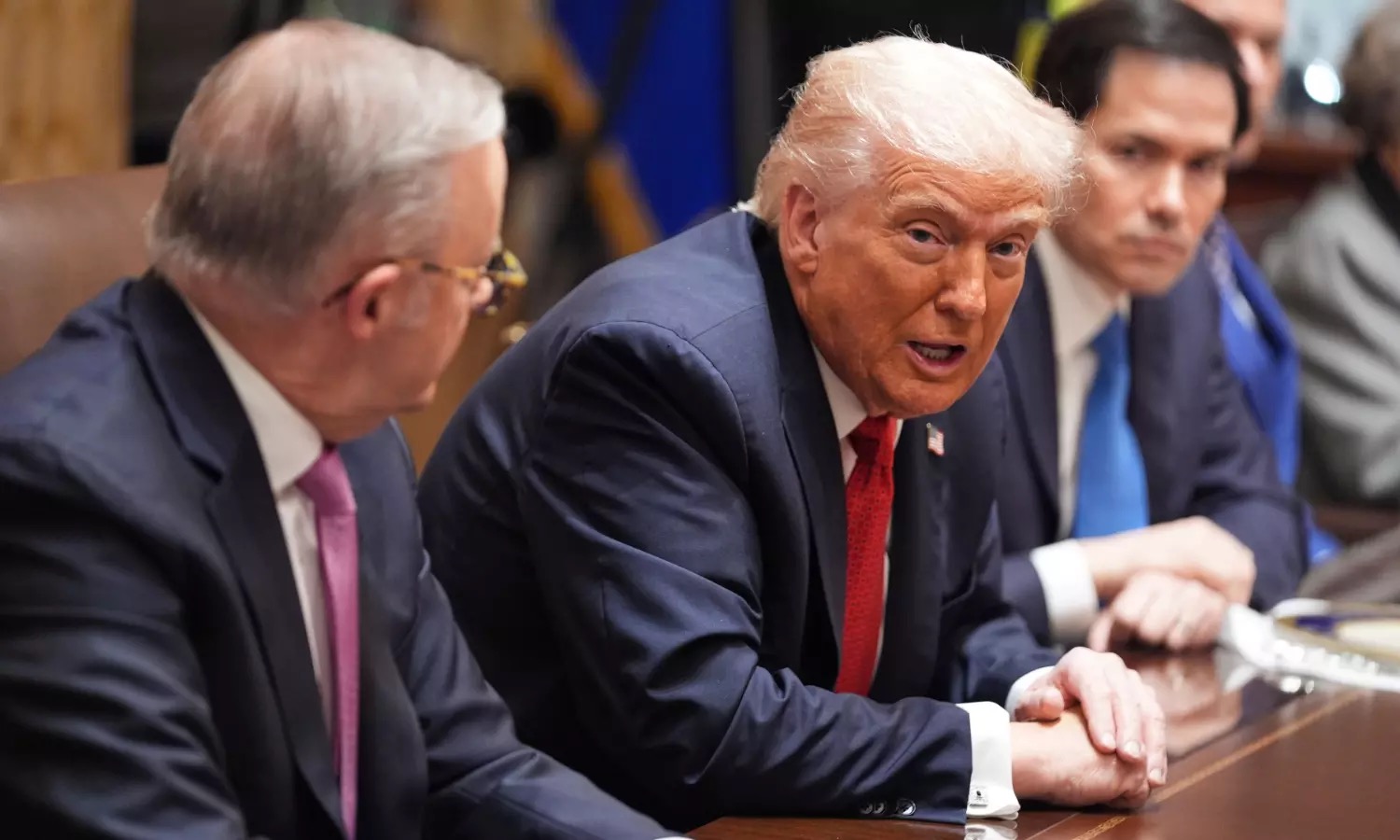In a dramatic escalation of trade tensions between the United States and China, President Donald Trump issued a stern ultimatum to Beijing on Monday, warning that unless a new trade deal is reached by November 1, his administration will impose tariffs of up to 155% on Chinese goods entering the U.S. market.
The announcement came during a press conference at the White House, where Trump stood alongside visiting Australian Prime Minister Anthony Albanese. Speaking to reporters, Trump said that China is currently facing tariffs of about 55%, and unless there is a significant shift in trade negotiations, that figure could nearly triple in less than two weeks.
“China is paying 55 percent right now, and a potential 155 percent is coming November 1 unless we make a deal,” Trump said.
The president portrayed the move as both a negotiating tactic and a necessary correction to what he called “decades of unfair trade.” He criticized prior administrations for allowing China to exploit the American economy, and insisted that the United States is no longer willing to accept one-sided deals.
A High-Stakes Deadline
Setting a firm deadline of November 1 puts intense pressure on both sides to make progress in stalled trade talks. Trump emphasized that he still hopes to reach an agreement, but made clear that the United States will not hesitate to act if Beijing does not offer major concessions.
The president hinted at an upcoming meeting with Chinese President Xi Jinping, expected to take place during a summit in South Korea. He expressed optimism that the two leaders could find common ground but also warned that the U.S. is fully prepared to act unilaterally.

“President Xi and I have always had a good relationship. But this is about America. It’s about fairness. We need a deal that works for our farmers, our workers, our businesses.”
Trump specifically mentioned agriculture and intellectual property as key points of contention, while also calling on China to lift restrictions on American tech and manufacturing sectors.
The Scope and Impact of a 155% Tariff
A 155% tariff would mark one of the most aggressive trade actions in modern American history. Economists and trade analysts say such a move could disrupt global markets, shake up supply chains, and significantly increase prices on a wide range of goods for U.S. consumers.
Trump, however, dismissed concerns over consumer costs, arguing that American businesses have already begun shifting production away from China. He claimed that the new tariffs would accelerate that trend and encourage companies to manufacture more products domestically.
“We’re bringing factories back. We’re making things here again. These tariffs are just part of making that happen.”
Despite Trump’s confidence, critics warn that tariffs of this scale could backfire, damaging both economies and potentially sparking retaliation from Beijing. American industries that rely on Chinese components, including electronics, textiles, and machinery, could face significant cost increases and disruptions.
What’s at Stake for the U.S. and China
The trade dispute between the U.S. and China has spanned multiple administrations, but Trump has taken a particularly aggressive approach during his presidency. His administration argues that China engages in unfair trade practices, including forced technology transfers, state subsidies, and restrictions on foreign firms.
China, in turn, has defended its policies and accused the U.S. of economic bullying. In recent months, Beijing has enacted tighter controls on the export of rare earth minerals and other strategic materials, moves widely seen as retaliation for U.S. pressure.
Trump’s latest threat raises the stakes significantly. If implemented, the tariffs would likely cover nearly all Chinese goods imported into the United States. At a time when global economies are already navigating inflation, supply chain strain, and geopolitical uncertainty, such a development could send shockwaves through financial markets and international relations.
Political and Strategic Calculations
Trump’s hardline message comes amid a broader shift in global economic power dynamics, with the U.S. and China increasingly competing for influence not just in trade, but in technology, military presence, and diplomatic alliances.
Politically, the ultimatum also serves to reinforce Trump’s image as a strong, America-first leader — particularly among his base. With elections looming next year, the administration is likely to use trade as a key talking point in appealing to voters who feel left behind by globalization.
Critics argue that the rhetoric could further isolate the United States and risk alienating allies who are already caught between the two superpowers. Others, however, see it as a necessary stance to correct what they view as systemic imbalances in global trade.

What Happens Next
With the November 1 deadline fast approaching, the world will be watching closely to see how China responds. Will Beijing come to the table with new concessions, or dig in its heels and prepare for a long-term trade confrontation?
For now, Trump remains firm in his position. He insists that the U.S. holds the stronger hand and that any short-term pain is worth the long-term gain of reshaping global trade in America’s favor.
“They need us more than we need them,” Trump said. “And if we don’t get the deal we want, we’ll just wait. But we’re not backing down.”
Whether the threat leads to a breakthrough or a breakdown remains to be seen. But one thing is clear: the next two weeks could reshape the future of U.S.-China economic relations — and potentially the global economy itself.











